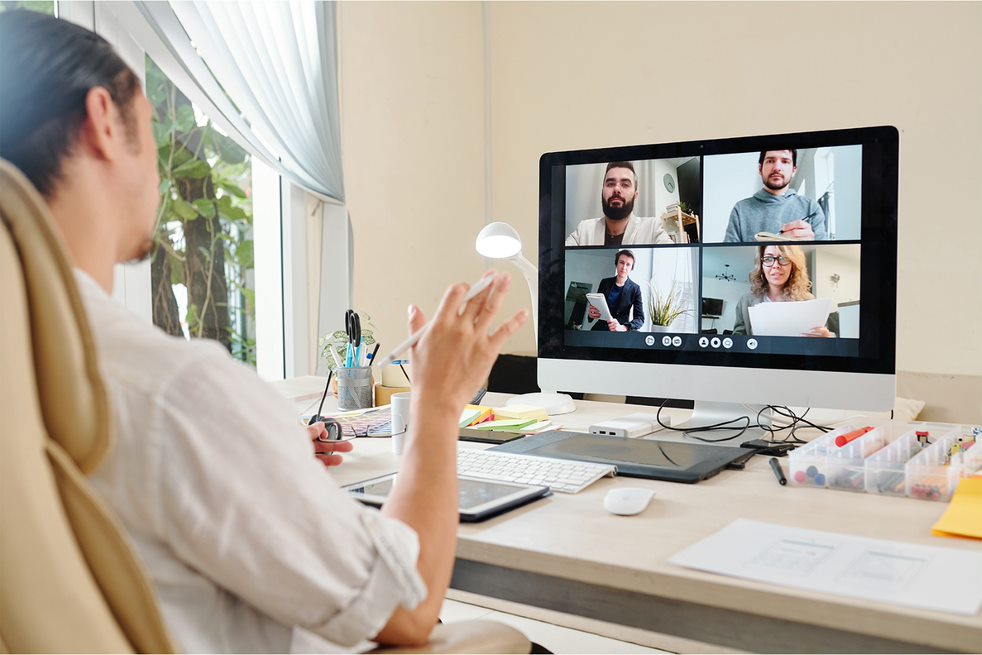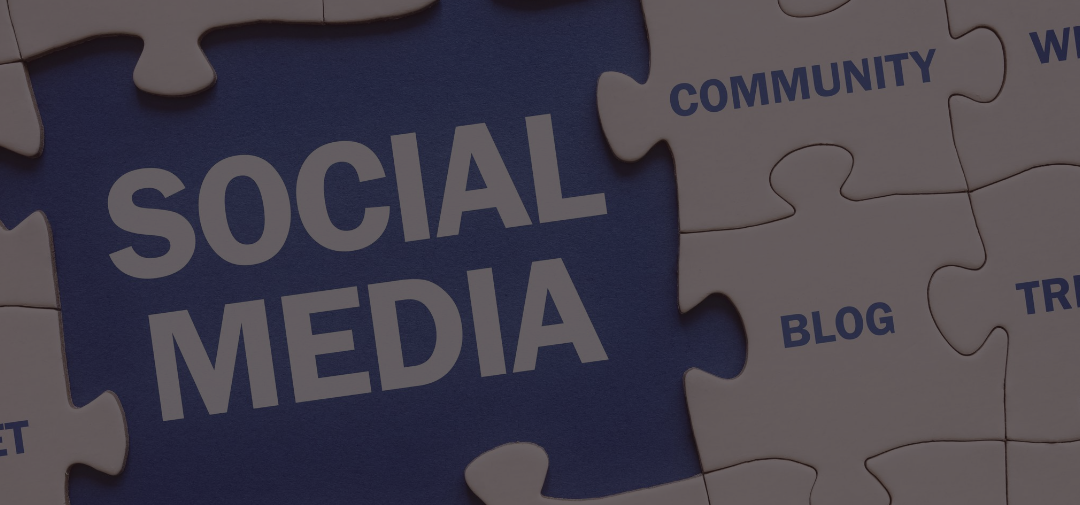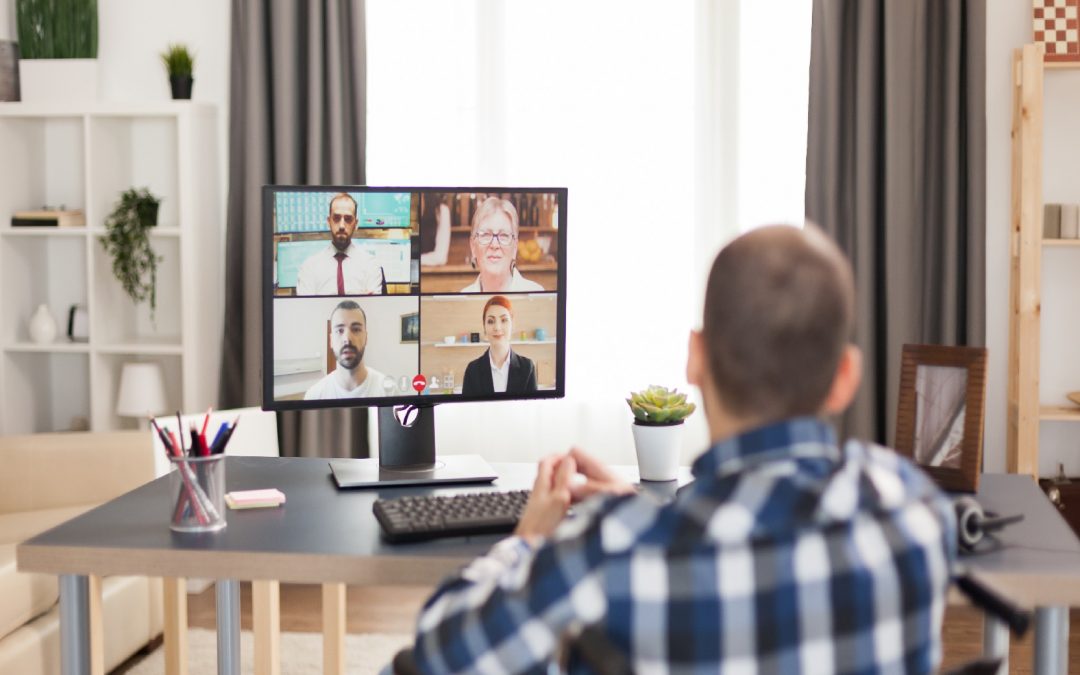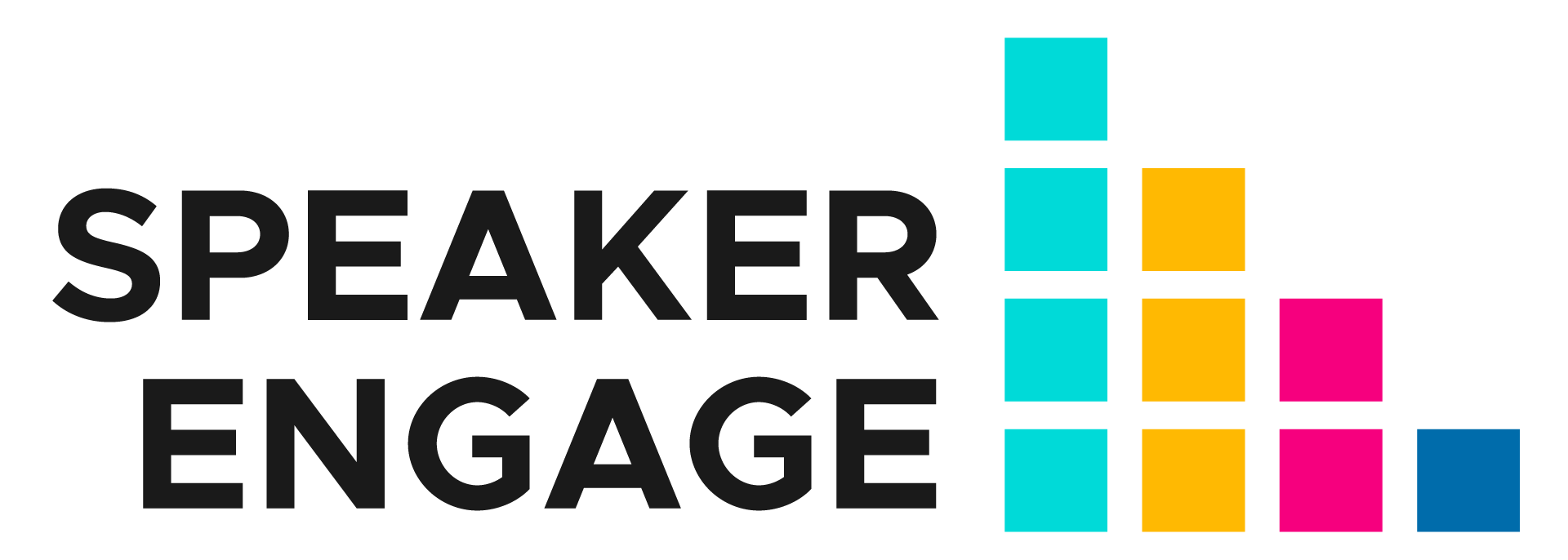
by admin | Dec 24, 2020 | Event Industry, Marketing, Tech, Virtual Events
There was a time when it was understood that ‘events’ meant ‘in-person’ events. But not anymore. Marketing has changed a lot from the last year or so. One major development is virtual events have taken center stage in marketers’ priorities.
It is true, we are missing out on experiences such as traveling and meeting people in person. But virtual events have managed to hold their fort and are doing surprisingly very well. According to a poll conducted by the Professional Convention Management Association, 81% of people expect to hold more virtual events in the future. And there is good reason to. Let’s see some major reasons why virtual events are useful and why an increasing number of people are adopting them.
1. Virtual events can be produced for less
Virtual events not only cost less to set up than in-person events, they are also open to more people. All you need is an invite and access to the internet to attend one. With a virtual event, you don’t have to make arrangements for venues, travel, or hospitality. If you plan and execute virtual events properly, they can give you more ROI than in-person events.
2. You can plan and execute a virtual event in less time
Virtual events don’t require you to transport people or physical displays, making them faster to set-up than in-person events. A small virtual event can be set-up and promoted in as less as 3-6 weeks. A large virtual event (with thousands of attendees) could take more than six weeks to set up. Meanwhile, it can take as long as eight weeks to set up an in-person event.
3. Attendees are more likely to attend a virtual event
Earlier, many people couldn’t attend as many events as they wanted to because they were averse to traveling. Many also had busy work schedules, in addition to the family and home responsibilities. All these ate into their event plans, and only people who absolutely couldn’t miss an event made it to in-person events. But the rules have changed now. Online hosting of events has made events accessible to more people. Today, we see more people attending virtual events than ever before.
4. Virtual events connect people from over the world
One of the significant disadvantages of in-person events is that they are limited by geography. For example, you want to attend a Metallica concert in New York City but you stay around 100 miles away, in Hartford, you have to think twice about attending. Virtual events give an excellent opportunity for cross-border networking because they are not limited by geography. If you are a business or event planner with global aspirations, this is a huge plus point. Here’s a post on the rise of the event technology strategist.
5. Virtual events can lead to more effective conversations
Holding a virtual event often costs a fraction of what it takes to have an in-person event. They also attract attendees from diverse locations. This makes it possible to hold virtual events for even niche events. With virtual events, you also have an opportunity to really impress your audience, rather than merely skimming the surface. Moreover, attendees at a niche virtual event are more likely to be interested in your product (or service) than others. Here’s a post on how to effectively market a virtual event.
6. Virtual events give a lot of insights and data
Asking people to fill up forms during and after in-person events is a bit of a hassle. But you need that data to find out what type of people are attending your event and other particulars. A filling of forms precedes many virtual events. Virtual events are also easy to record. This is an invaluable resource for salespersons who want to find prospects for their product (or service) or marketers who wish to find data points to fine-tune their strategies.
6. Virtual events appeal to high-profile speakers
High-in-demand speakers are hard to pin down for an in-person event unless you offer something substantial in return. In fact, you may not be able to get a high-level executive even from your own company to speak at your in-person event, especially if they have to travel a lot. But in virtual events, there is no traveling involved. This feature makes virtual events more attractive to high-in-demand and C-level speakers.
7. Virtual events are much easier to scale than in-person events
In-person events can be scaled only to the extent of the capability of the venue. With virtual events, you have the option of using a videoconferencing app or a dedicated streaming service. As a result, virtual events are much easier (and faster) to scale to accommodate a large number of people at a fraction of the cost. And more people mean better reach and visibility.
8. Virtual events can keep pace with your offerings
If you are about to launch a new offering or make a significant announcement regarding your product, and you want it to be interactive, a virtual event can help. Now, you no longer have to wait to accumulate a large product pipeline and introduce all of them at once at an in-person event. Instead, you can make more frequent announcements via a virtual event.
9. Virtual events help you qualify leads more quickly
It is possible to integrate appointment calendars with virtual events, allowing you to follow-up with prospects, even as your events are running. In short, virtual events enable you to qualify leads more quickly and lead them down the sales funnel faster.
Running a virtual event is both easy and difficult at the same time. You not only have to come up with creative ideas to make your event attractive to your audience; you also have to find the right technology to ensure the event passes off smoothly. Here’s a post on the latest trends in event technology.
How good it would be if you had a platform to curate and engage with at least your speakers! But don’t give up yet because have some good news for you!
Speaker Engage is a fully-integrated, cloud-based platform designed by event organizers for event organizers that helps you curate and delight speakers & sponsors by streamlining the event planning and execution process. Sign up for a demo today!

by admin | Dec 24, 2020 | Event Industry, Marketing, Tech, Virtual Events
In the wake of the coronavirus pandemic, many businesses and event planners switched to virtual events rather than cancelling their pre-decided in-person meet. As a result, virtual conferences and events have become the new normal. Businesses may now directly reach thousands of people in different locations at the same time through virtual events.
However, it is not easy to conduct and manage virtual events. It requires thorough planning and an investment of time and effort for its successful promotion and execution. Your event marketing strategy must be on point to provide participants with a terrific experience and ensure the event’s success.
Here are a few tips on how to promote a virtual event in a better way to meet all of your objectives.
A- Create an attractive landing page for the event
A landing page is where the users go to in order to learn everything about your event. Since the first impression has to be the best, the landing page you develop for your event must stand out with vital information presented appealingly. The landing page should give out the complete information regarding the event, with the registration link pushing visitors to join the event. The page should be detailed and attractive to draw the attention of the user. Some of the essential information that has to be added to the landing page are:
- Time
- Date
- Agenda
- Speaker information
- Sponsor information
- Registration link
- Payment option (if any)
B- Make use of existing database for email marketing
Email marketing is still the most effective marketing strategy to drive results. Send out email newsletters with a clear subject line to your target audience. Come up with an engaging email campaign and share valuable information to educate your audience about the event updates. The email should have complete information regarding the event. Make sure to hook your audience with exciting updates and offers, such as discounts and early-bird offers.
C- Leverage your social media channels
Promoting your event on social media platforms is one of the best ways to reach more people. And there are endless ways to do so. Understand your audience and their behavior patterns; this will help you come up with the perfect plan to market your campaigns. Craft distinctive, appealing social media posts to increase engagement and generate leads. Here are some ideas that you can follow:
- Spread the word by creating a hashtag.
- Share eye-catching images and videos optimized for each platform.
- Publicize the event’s unique selling points widely.
- Promote early bird offers and deadlines, driving urgency to boost registrations.
- Increase engagement by creatively introducing the host.
D- Boost promotions through your partners, sponsors, and speakers
Involving your speakers, partners, and sponsors in the promotion efforts of your event will help you gain exponential results. When the speakers promote your event on their social media channels with the relevant content and hashtag, it will help you get their audience to the event. And, when the sponsors and partners promote your online event, it reaches new audiences and has tremendous effects on the turn up. Encourage them to share the event’s details with their contacts and followers so that the word gets out. Sharing the registration links, social media page links, graphics, announcements, etc., is a step in the right direction.
E- Prepare attractive videos for promotion
We all love watching original video content. Videos are a crucial aspect of your event promotion strategy. Several studies explain that with a 2-minute video, you can hit the engagement jackpot. Thus, create a short video (no longer than 2 minutes) showcasing vital information regarding the event and share it on all social media channels and YouTube. Make it funny and engaging, and use your social media hashtag somewhere in the video.
Summary
Virtual events can seem tricky. However, with a proper and sound marketing plan, you can easily promote your event, which will help you drive as many participants as possible. Follow the ideas mentioned above and promote your event successfully.
If you are planning to organize and promote your virtual event, contact us. We will help you ease your task and guide you every step of the way.
YouTube description: Promoting a virtual events sound very tricky. But it doesn’t have to be. Watch this video to learn a few tips and tricks on how to promote your virtual event in the best way possible.

by admin | Sep 4, 2020 | Virtual Events
Virtual events became more popular even before the COVID-19 outbreak, as businesses looked for new ways to interact and collaborate. We saw a rise in virtual events forced by necessity, and these changes bode well for the event industry. It resulted in an increased demand for tools like Microsoft Teams. In fact, according to a stat of TomTalks, Microsoft Teams leads the way as the most common virtual meeting option with 145m daily active users.
As a solution for a vast audience, MS Teams Live event lets you structure and deliver significant broadcast-style events to reach employees, customers, and business partners. It allows you to schedule and produce events for an audience of up to 10,000 attendees. You can coordinate seamless and engaging virtual events from anywhere and at any time. MS Teams is designed to enhance the experience of both the presenter and the attendee. It is one of the best all-in-one platforms available today for video, file and screen sharing, instant chat, and more.
Now comes the big question – “Do you know how to get the best out of Teams and enhance your MS Teams event experience, both as an organizer and as an attendee?” Even after we go back to the old normal, Teams will be an unavoidable, crucial part of our daily routines. Before you start getting into the thick of things, here are a few basic steps you must know to conduct a seamless virtual event.
How to Schedule Your Teams Live Event
- Select Live Event from the drop-down in the Teams calendar, from within the Teams desktop application or the Web app, to begin creating the event.
- Add a title, location (optional), times, details (optional), and invite people as either producers or presenters.
- After choosing ‘Next,’ pick your live event permissions.
- Choose Teams or an external app/device for how to produce your live event.
- Choose options as your preferences from the checkboxes.
- Once you click the ‘schedule’ button, make sure to copy the invite link and share it via Teams channels or email.
How to Start Your Teams Live Event
- Join the event from your calendar.
- You’ll see two preview screens – while the left screen is to queue up the things to be broadcasted, the right screen is what viewers will see in real-time.
- Since the meeting is in the pre-live mode now, ensure that your audio and video solutions are selected and working correctly.
- The ‘Share’ button can be used to share your content.
- Once everything is queued up, select ‘Send live’. The event can neither be stopped nor restarted, and it can last up to 16 hours.
- You can see, on the next screen, that the event has changed from pre-live to live.
- Click on the content in the bottom pane to switch to another source. It will then appear in the queue window and can be shared with the live event by clicking ‘Send.’
- There are settings in the upper right-hand corner that will allow you to create notes, chat with other presenters, etc., without viewers watching.
- After choosing ‘End’ to end the event ultimately, you can access the recording, several reports, transcript, and much more.
How do I Attend a Teams Live Event?
- Open the live event link to join the event.
- You don’t have to have Teams application to attend the MS Teams live event. The event will open right away if you are using the Teams application. Otherwise, you can watch it on the web.
- Once the event starts, you can join as an authenticated user if you are using Teams. Otherwise, you can join anonymously utilizing the web app.
- You can manually reset the resolution/quality of the video by clicking on the gear on the bottom right.
- You can see the presented content, participate in the live Q&A, ask questions at any time, and pause and replay the event as you are watching, even anonymously.
- If available, you can still watch the recording once the live event is over.
Summing Up
There you have it! You have the most fabulous tips for mastering your Microsoft Teams events. Check out this blog for a deeper dive into tips to master Microsoft Teams Live.
Speaker Engage has been helping event planners make the whole experience of event management as smooth as possible. We help event planners curate a seamless event by removing the chaos from event planning and execution with the help of our fully integrated, cloud-based platform.
As a Microsoft Partner, we stay on top of the event management sector and are proud of having helped several companies and event planners with our solution. If you are researching, planning, or considering conducting a virtual event and looking for virtual event platforms, let us know. We have 2 of the most excellent tools, MS Teams and Speaker Engage, that will guide you through the process.

by admin | Aug 13, 2020 | Virtual Events
Finally, you’ve decided to conduct a webinar on your favorite topic. Now what? How do you make your webinar a successful one? How do you get the word out there? Have you prepared your webinar promotion strategy?
Well, you can’t just sit and hope people find your webinar organically. You need to promote your webinar if you want it to meet and exceed your webinar goals and make it a successful one.
Here are some interesting facts from Go-to-Meeting’s Big Book of Webinar Stats that might surprise you:
- 57% of webinar registrations come from email.
- More than half of the signups happen during the week of the event.
- Promoting the event at least four weeks beforehand results in 12% more registrations on average.
- 63% of people submit their registration on a Monday, Tuesday, or Wednesday.
Fortunately, there are several ways to promote a webinar and drive more people. This article will help you plan and promote your webinars in the most effective ways. Read on!
How to Promote and Attract Your Audience?
Everyone is busy, so your target audience should be given enough time to know your webinar and schedule it. Therefore, the news about your webinar should reach everywhere before the event.
Build a timeline
You must start planning your strategy at least seven weeks before the launch date of your webinar. And your promotional programs should begin within 5-6 weeks before. It would help if you took the time for copy creation, design, and development requirements while building the strategy.
Now, let us consider a few critical marketing assets and tactics you must consider while marketing your webinar:
- Hello Bar
A hello bar is proven to be a very successful aspect of increasing lead generation. This simple yet effective bar usually enters across the top of your screen (sometimes from the bottom too) and spans the entire width of your browser. You can add the information in one or two sentences and add a CTA that takes the user to the landing page.
-
Website pop-up window
A pop-up CTA captures the user’s interest while also creating a sense of newness and urgency to the webinar offer. The pop-up will make them stop for a few seconds and let them quickly read your proposal. You’re giving them another chance to convert, and it is proven to increase lead generation. It is also considered one of the best ways to promote webinars or virtual events.
- CTA, CTA everywhere
Add CTAs everywhere that would take the user to a well-written and organized landing page that encourages them more to register. Post the CTAs anywhere you can reasonably put it – home page, blogs, other web pages, emails, etc.
- Teaser video and Promotional video
Embed a small promotional video that includes all information about the webinar on your registration page and home page, and then share it through social media accounts and email. You can ask your presenters too to contribute.
-
Promotional emails
Emails are one of the most effective ways of promoting webinars. If you use it wisely, a great outcome is inevitable. You can send 3 or 4 sets of emails. While the first one can be a heads-up email that you send out 3-4 weeks before the event, the following sets of emails can be mailed 1-2 weeks before the event, with the complete information and promotional video. And, since most signups happen until it’s closer to the webinar date, it is better to promote the webinar via email until the day of the event. Keep sending that mail!
-
Webinar promotion on social media
Social media is a powerful promotional space. Create attractive posts and creatives and share them on all the social media platforms — Facebook, Twitter, Instagram, etc. and ask the webinar guests and presenters to share them. It will also help you increase the organization’s networks.
- Email Signature
Besides sending the emails, you can add the webinar landing page link as your email signature. It is one of the best ways to spread the webinar news to people outside your regular database.
- Ad campaign
How do you attract new faces? You should consider some targeted digital advertising. You can run your advertisements on all social media platforms. However, LinkedIn will help you in particular since you will be able to target people whose jobs and industries fall under your webinar category using these ads.
- Write Blog(s)
It would help if you wrote promotional blog articles that explicitly promote your webinar. These blogs should include the reasons why people should attend your webinar. You should publish it with an attractive CTA attached to it and then promote it on social media.
Summary
Follow these easy webinar promotion tactics, create a comprehensive webinar promotion plan, and maximize your chances of reaching as many people as possible. You are already on your path to success. Also, make sure you always keep your audience in mind while planning your webinar and its promotion. If you need help planning the webinar of your dreams, check out Speaker Engage or shoot us an email at support@speakerengage.com, and we’ll help you execute well-received events!

by admin | Aug 13, 2020 | Virtual Events
It is hard enough to be hosting and planning a virtual event. Having a sold-out virtual event, with all your attendees participating, is also a challenging task.
Although there are roads, you could take to ensure you have complete attendance. There are umpteen platforms and channels available to event organizers such as ourselves to promote and engage our audiences. In this article, we shall be looking at a comprehensive list of actionable tasks that will guarantee attendance at your virtual event.
- Choose your topic wisely
The first stage of planning should involve intensive research into the type of content consumed. Should it a conversation or a training session?
After this exercise, you would have zeroed in on your target audience and a topic that your research points will be well received. With the content and target audience, you would know the format of virtual events most preferred. This way, you can host a panel discussion, a review or a thought leader training session, and get maximum attendance.
2. Time Zone compatibility
Once you have the topic of your virtual event, you must pick a date and time. This step is crucial in garnering attendance, as it must at a time where your target audience from across the globe will not have trouble attending.
3. Create relevant content for audiences
Never underestimate the power of a good content marketing strategy. Now that we have a virtual event, we must focus all energy on attendance. People register, but participation is not guaranteed.
Create content to educate your audience about the chosen topic. Share information, but place cliff hangers. The content you create, be it blogs, posts, articles, podcasts or YouTube videos must not give away everything. Ensure your creators circle back to the virtual event and encourage attendance through them.
4. Engage through content
Now that we have a content library. It is up to marketers to plan and place them across platforms and channels to ensure that all verticals of your target audience can access it.
Create an engagement calendar where you ensure engagement with your audience periodically. Be it daily, once, or twice a week, your audience needs to be aware so that they can comment, share, or like. Creating a space for your audience to interact will create engagement opportunities.
5. Create audience engagement
Engagement is one thing, but acknowledging the participation empowers the audience. Once the audience registers to your event, shares your event, gets others to register, you can present them with badges or titles.
This acknowledgment encourages people to take part in activities that promise an incentive. This way, you can turn your audience into event marketers.
6. Speaker turn Brand Ambassadors
While recruiting or choosing speakers for your event, ensure that they are subject matter experts. This way, the reach of the virtual event extends to all those following your speakers. Make your speakers the brand ambassadors for the virtual event. Encourage them to participate and engage through their platforms to guarantee more participation. The speakers could share your activity and have a dedicated content bucket assigned to be used on their platform, leading their audience to register for the virtual event.
7. Enlist your Event
The internet is brimming with online events, making it cumbersome for the audience to find the right virtual event to attend or engage. To avoid the clutter and present actual value-added events to the audience, list your events in platforms with a good following. List yourself on the Speaker Engage event directory, and you will stand out as a verified virtual event.
8. Early bird registration perks.
Give away freebies or value-ads to those who register and attend early.
Through your social media marketing or e-mail marketing campaigns, push out giveaways for all those who register for your event in the first week. Promise them collaterals or incentives once they have logged into the virtual early as well. This way, you encourage people to sign up soon and have maximum attendance right at the beginning of your virtual event.
These are just a few steps you can follow to ensure maximum participation. Here is an e-book that has all actionable steps you can take to ensure your event follows all the best practices out there.
One way to ensure your team has an easy time organizing, planning, and communicating through the events, sign up to Speaker Engage and save your time. Speaker Engage is now available for a free trial for 100 days!
Here is an e-book that has all actionable steps you can take to ensure your event follows all the best practices out there.
[contact-form-7 404 "Not Found"]

by admin | Aug 4, 2020 | Virtual Events
Make your Microsoft Teams Live Event stand out from the rest. A conferencing tool part of Office365, you can use it to broadcast webinars and other online events to up to 10,000 attendees. Microsoft Teams Live Event is different from Microsoft Team Meetings and is used for one-way communication with a larger crowd.
Why Use Teams Live
Office 365 subscribers get to use Microsoft Teams as part of the ecosystem. Apart from conducting a live event with 10,000 people, you can get an option to chat. Unlike Zoom, call time on this is unlimited. In addition to video conferencing, you can host audio calls with people inside and outside your organization.
Microsoft Teams allows you to set up smaller teams to increase collaboration within departments. For example, you can create a team for the digital marketing team or include all stakeholders working together on a specific project. The team members can share and perform documents, applications, video conferencing, and audio calls within the group. Users can access Microsoft Teams on their computers or mobile phones using their app.
Basic Functionality & Updates
Video conferencing has become so popular that it’s also used in post-work hours to meet your colleagues and friends, albeit the beer. Although Zoom has taken the virtual meeting world by storm, Microsoft Teams Live Event has added benefits that can improve your meeting experience.
- Chat, call, video conferencing, and collaborate within the tool
- Substitute your mobiles devices while telecommuting
Keeping smooth conferencing in mind, Microsoft Teams made few changes to the tool, making it a more reliable platform. Some of the added functions are:
- Users can move communication from Teams to Outlook and vice versa
- Message an entire department at once
- Improved security compliance and administrative tools
Without further ado, here are some tricks that you can enjoy to ensure that your event becomes a smashing success. These tips and tricks are for those who are either new or experienced using Microsoft Teams Video Conferencing.
A- Creating Invitations in Outlook
You can create Microsoft Teams meetings on Outlook with a plug-in that provides all users with a link to the meeting. Most companies use Outlook for emailing and communication. This feature makes scheduling and starting video conferencing a breeze.
B- Show a Cover Slide in Your Presentation
- It is essential to communicate clearly with the attendees about the status of the event. How do you do that? When the event is not live (pre-live status) at the scheduled time, people will see a black screen with a ‘The live event hasn’t started’ message. Or you would have gone ‘live’ but not started to present to give attendees time to enter.
- If you go live and there is no audio and people see the above-mentioned black screen, they might assume that there are sound issues and message you to fix it. To avoid this, let the first slide have the message, ‘the event will begin shortly,’ and unmute periodically to tell people to wait for a few more moments for the event to begin.
C- Change or Blur Background
If you aren’t happy with your background, Teams Live can blur the feature to frost the background. This feature is handy when you are in public or protect your privacy.
D- Define Roles for Your Virtual Event
Defining roles for your virtual event will decrease last-minute chaos and confusion during the live event. Let’s look at each position:
Presenter: A live event can have multiple presenters. All the presenters can present their audio, share their content, and stream images from their computers. You can also switch them to the moderator role if you have switched on the live Q&A session.
Moderator: It is good to have a moderator for every event to handle Q&As and enhance the audience experience. They can publish questions and can answer each question.
Producer: A live event can have only one producer. It is the producer’s responsibility to ensure correct content and format are presented at the right times to the audience. They can start and stop an event, share participant videos, and select layout. Unlike other video conferencing tools, the producer can share, access, and edit Word docs, PowerPoint, and Excel in real-time. They can open and discuss the documents on the call, share feedback, and collaborate to finish projects.
E- The 30-second Delay
Microsoft Teams Live Events has a 20-30 seconds delay, which may confuse. If people enter as an attendee on a device, they need to be aware of the Delay. Some may think that slides are not transitioning at the right place, forgetting that it isn’t in sync with the presentation. The Delay may also impact Q&A when the fall or topic would have moved when a question comes up. Presenters must build the skills to make the transition smoother, keeping Delay in mind.
Bonus Tip: Be Aware of the Presenter — Attendee Dilemma
(Image place-holder available in the current blog)
When you create a Live Event, write the message, don’t forward this invitation. Go to Microsoft Teams to invite additional people. All presenters will get the invite in the email as shown below that should not be sent to people who are not the presenters of the event:
(Image place-holder available in the current blog)
This is because the Get attendee link copies the link to the clipboard that you can forward in emails, social media, and communication tools. People who click Join will join as presenters and enter backstage as presenters when they are not. It will be a lot of work to get them to mute while the actual presenters present.
Remember to use a shorter URL to link the URL to a custom URL.
Restarting an Event
Live events that abruptly end due to circumstances due to technical issues. In that case, event organizers can create a new event using the same criteria, and team members can join. Use a shorter URL to create a custom URL for the event. You can also use the same URL to link the new URL to the customized URL you created earlier, helping everyone join quickly.
Microsoft Teams Live Event is a great platform to connect with your colleagues and external stakeholders. It can take your live event experience to a new level. The platform encourages connections with attendees before, during, and after live events. Try out Live Event in Microsoft Teams, test it, and get to know all the roles and features, and with enough practice, you will start creating flawless events.
To learn how to rock your online events with MS Teams Live, sign up to get our e-book in your inbox.








